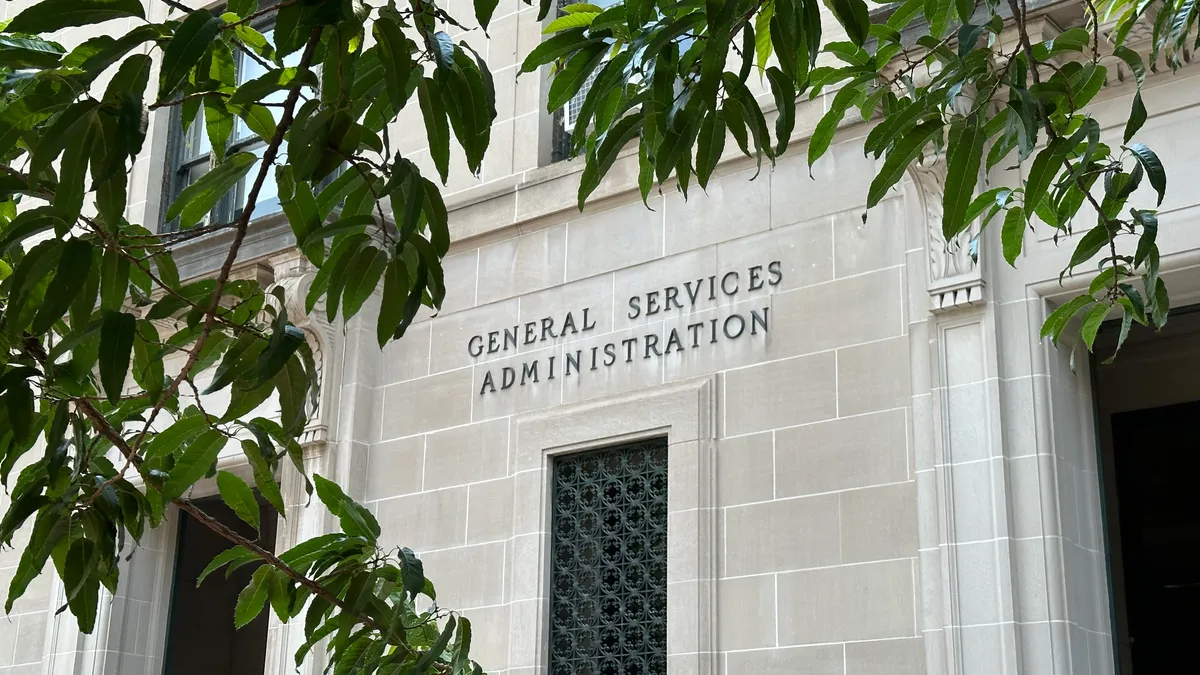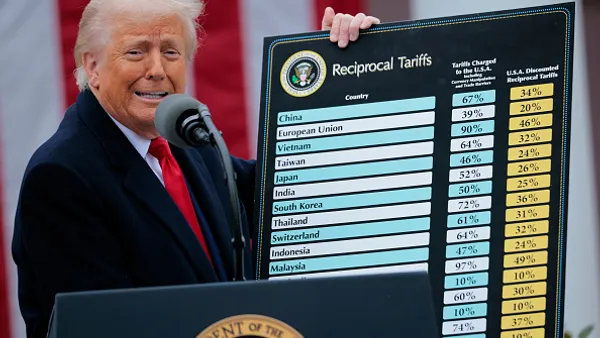Dive Brief:
- Portfolio optimization will play a key role in government real estate this year, led by federal efforts to evaluate and consolidate leased office space, according to JLL’s 2024 government trends report.
- As many government employees continue to adopt hybrid, remote or in-person schedules, a significant portion of the workforce is also opting for retirement. Thirty percent of the federal workforce plans to retire in the next five years, according to a 2022 Office of Personnel Management survey.
- Given the need to attract younger workers as longtime government employees retire, lease consolidation plans are more urgent now, Kameshia Freeman, senior vice president at JLL’s government and education division, told Facilities Dive. “To attract and retain top talent, employers must prioritize employees’ locational flexibility needs, making a hybrid work model crucial,” Freeman said.
Dive Insight:
More than 50% of the federal government’s leased space, spanning 80 million square feet of leased office space, is set to expire between 2024 and 2029, JLL’s report says. Since 2015, the federal government has trimmed its leased real estate portfolio by 9% nationally, according to the report.
But a U.S. Government Accountability Office review found that, as of early 2023, a majority of federal agency headquarters buildings were largely empty, with 17 of 24 agencies using an estimated 25% of their building capacity. At a Senate committee hearing last September, Sen. Tom Carper, D-Del., described the situation as “alarming” as well as “not a sustainable or fiscally responsible way to manage our federal real estate.” Despite new return-to-office mandates taking effect for 122,000 federal employees at the start of the year, a majority of U.S. government workers work remotely, at least on a part-time basis, according to the findings of the Office of Personnel Management’s 2023 Federal Employee Viewpoint survey.
The U.S. General Services Administration, which manages the federal government’s real estate portfolio, has the opportunity to significantly downsize its leased space between 2024 and 2029, JLL’s report says. In its 2024 budget proposal, the GSA asked Congress to increase its lease prospectus threshold from about $3.6 million to $10 million to “decrease the number of leases that need congressional approval and…allow for more efficient agency consolidation into leased office space,” JLL says in its report.
Though the precise amount of money saved is difficult to project, this change “will save the taxpayers hundreds of millions of dollars,” said Bob Hunt, group managing director for government and education at JLL, in an email to Facilities Dive. Hunt said the practice has developed portfolio optimization strategies for the GSA as well as the Tennessee and Oregon state governments and the city of San Diego.
Faced with a decline in commercial property values that have disrupted property tax revenues, local governments are also increasingly re-assessing municipality revenue streams, JLL identified as another trend in 2024.
In addition, many cities “are calling their workers back to the office to make a statement to local businesses that they should do the same,” Hunt said. Because they aim to set this example for private businesses, municipal governments are less likely to downsize their real estate holdings, he noted.
Meanwhile, 60% of federal employees have been on the job for more than 10 years, JLL’s report notes. Millennial and Gen Z workers will largely replace departing veteran employees, with those under 30 already accounting for 8% to 10% of federal workers, Freeman said. JLL’s report cites expectations of workers under 30 constituting 30% of the workforce by next year.
Younger workers, while exercising a preference for location flexibility, are “the most energized by a high level of interaction at work,” the report says, noting that this trend highlights the need for redesigned workplaces that maximize “innovation, collaboration, and flexibility.”
JLL’s report also calls for federal agencies to consider the Biden Administration’s goal for federal buildings to achieve net-zero carbon emissions by 2045 as they right-size their real estate portfolios. As the largest occupier of space nationwide, the GSA, in particular, should prioritize net-zero while making real estate portfolio decisions, the report notes. Officials at the agency have, however, expressed skepticism about meeting those goals without adequate resources beyond what has historically been available. JLL recommends that portfolio managers exit older, inefficient buildings “that slow down the efforts towards a net-zero inventory,” while adding clean energy capacity, upgrading to more efficient lighting and pursuing additional emissions-reducing efforts.












